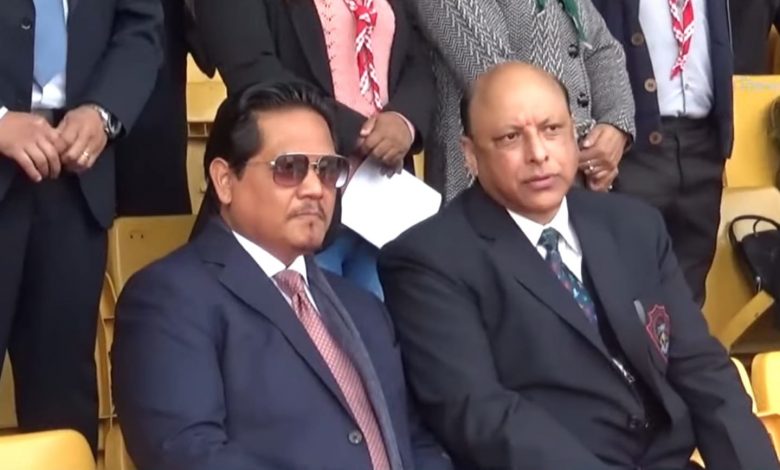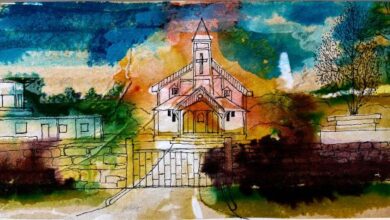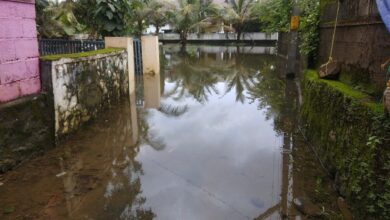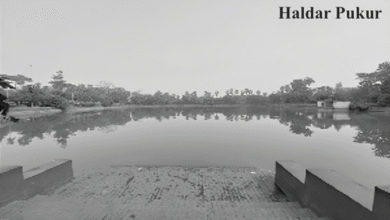Clothing as a tool of political communication
A common man often recognises the political “meaning” of a party based on the attire or political clothing depicted

 In this article, I will be writing broadly on the role of political clothing — the what, why and how of it. This idea came to me when a young researcher contacted me to ask some questions on this topic. Initially, I wondered what this topic meant and was amazed at what I learnt after doing some reading.
In this article, I will be writing broadly on the role of political clothing — the what, why and how of it. This idea came to me when a young researcher contacted me to ask some questions on this topic. Initially, I wondered what this topic meant and was amazed at what I learnt after doing some reading.
Broadly, political clothing represents the “types of clothes, accessories that are used to convey political messages. It represents a visual form of activism and identity expression”.
The significance of political clothing includes expressing one’s freedom, using it as a protest tool, unifying people for collective movements, and most importantly, serving a strong non-verbal statement.
In political administration, it is important to have a balance, especially by people who are in government services.
Types of political clothing include:
Patriotic attire, which represents a country
For example, the Khadi in India, Trump campaign: Make America Great Again (MAGA) hats
Symbolic clothing
For example, Black Panthers who wore black berets, the Marxist revolutionary symbolism- the Che Guevara T-shirts
Protest clothing adapted by activists
For example, pink colour clothing by women protesters
Political affiliations where uniforms are worn
For example, white represents peace, red stands for Marxism
Is political clothing a statement or expression?
Typically, political clothing can be identified with both the statements; however, it largely depends on the context, political idealism and interpretation. In some cases, they are intertwined. As a statement, it represents an ideology, conveys a message and maintains an identity. It acts as a tool to indicate loyalty or disagreement.
Examples include black armbands, saffron scarves, green turbans etc.
As forms of expression, it becomes personal and linked to emotion, culture and becomes more nuanced and less controversial.
For instance, in government, individuals wearing traditional or tribal attire may display messages that represent a campaign’s message.
How is Political Clothing Applicable to Politicians and Political Executives?
It can be applied to both, but may differ based on roles and responsibilities.
Who? Political leaders are elected representatives to include Leaders of a country, legislators
What? Their political clothing represents their political party, country
How? Influences people and citizens
Colour choices represent the party’s manifesto sometimes
For example, the rolled-up sleeves by Barack Obama represented the leader of the people
Narendra Modi’s kurta and Nehru jackets represent a cultural image
Who? Executives are bureaucrats, diplomats, judges etc
What? Projects neutrality and professionalism
How? Symbolises authority
Represents allegiance and neutrality in sensitive scenarios
For example, Judicial robes and military uniforms
Fundamental Differences
| Characteristics | Elected Officials | Bureaucrats and Civil Servants |
| Options
|
Wear symbolic or make a statement
|
Ensues institutional dress codes |
| Objective of Clothing | Personal branding and political messaging | Adapts professionalism and neutrality |
| Political Impact | Straight forward | Military uniforms and judicial robes |
| Examples | Campaign outfits, party colours, nationalist attire | Indirect, but still symbolic |
Political clothing can be considered as a representation of political affiliation, personal views, activism or simply making a fashion statement. In some cases, it has become a trend and symbolises a variety of things from a political angle. A common man often recognises the political “meaning” of a party based on the attire or political clothing depicted.
It remains a powerful tool to convey a political statement or ideology.





